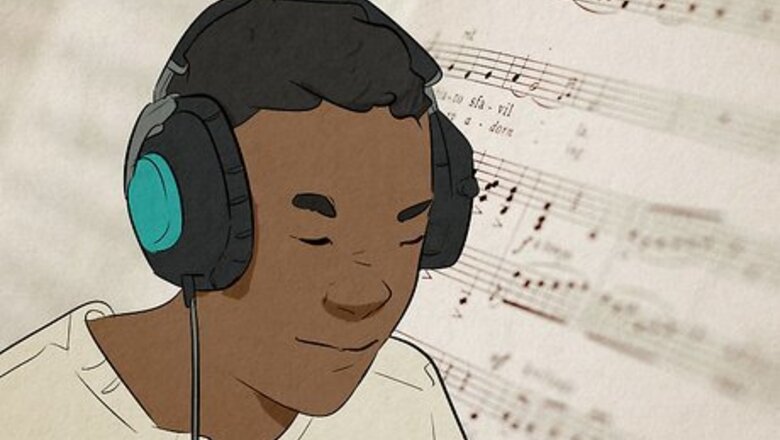
views
- Learn the basic structure of the song, and focus on any repetition, variation, melodies, and harmonies.
- Close your eyes while listening, think about the emotions of the song, and visualize a scene that it could be playing over.
- Look up the lyrics on sites like Genius or AZ Lyrics. Read annotations by the artist, and research the history and social context of the song.
How to Actively Listen to Music
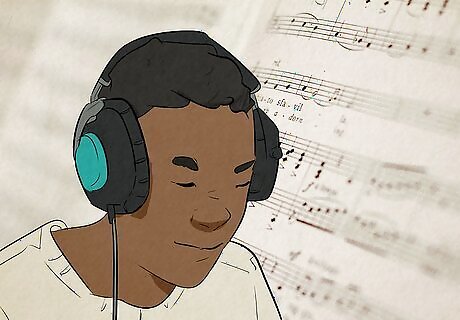
Pay attention to the overall structure of the song. According to professional pianist, composer, and music educator Warren Lee, one of the best ways to really listen to music is to “learn the basic structure of a piece.” Note any repetition, variation, melodies, and harmonies throughout the song, and question their placement: Why is a certain section being repeated or varied? Is it because the melody is great, or is it to highlight the lyrics? Repetition: When sounds or sequences are frequently repeated throughout a song. Variation: When material is repeated in an altered form, such as a change in harmony, melody, rhythm, timbre (quality), counterpoint, orchestration, or any combination of these. Melody: A collection of notes, like the beginning of “Seven Nation Army" or the vocal notes repeated in a chorus. A catchy melody is usually the key to whether or not a song catches on. Harmony: A collection of notes played at any given time. Think of it as what music sounds like “vertically,” or how multiple voices, instruments, and chords come together in a moment.
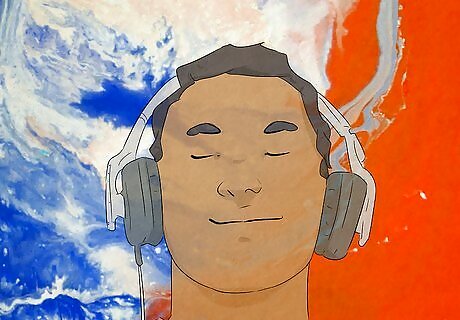
Concentrate on the colors, textures, and balance of the music. Professional pianist, composer, and music educator Warren Lee recommends “thinking about the emotions and feelings” of a song and “learning to hear it as a story.” When listening, close your eyes and visualize a scene that the song could be playing over. Does it evoke the mood of a rainy day in autumn, the giddiness of your first crush, or the nostalgic memories of summertime? Color: The unique sound quality of an instrument that isn’t characterized by pitch, rhythm, or volume, such as the timbre of an instrument or the quality of a chord. If the song was a movie scene, what is the dominant mood or vibe? Texture: How different layers of sound are combined and interact in a piece of music. This mostly comes from the rhythm, so focus on whether the notes sound long, well-held, and smooth, or short, choppy, and distorted. Balance: The distribution of energy across the sound spectrum so one element or instrument doesn’t dominate the song. It could be sparse, like the beginning of “Hey Jude”, or big, bold, and filled with noise, like the end of the song.
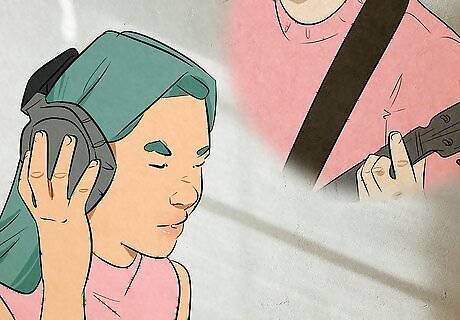
Focus on a specific instrument and how it contributes to the song. Pick one instrument in the song, and ignore everything else that’s playing. Listen to the tone, intonation, and how it phrases the melody. If there’s a solo with the instrument, replay it again to see if there are any changes. Does the melody soar into an unfamiliar accent? Does a new rhythm add more grooviness? Does a buzz suddenly splinter into a fractured collision of noise and excitement? Tone: A vocal or instrumental sound that’s characterized by its pitch, duration, intensity, and timbre. Intonation: The pitch accuracy of a musician or musical instrument. In other words, how flat or sharp a note is.
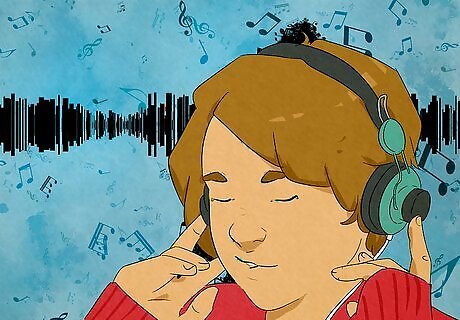
Think about the song's movement, or progression. After the first listen, play the song again to see if there are any changes from the beginning to the end. Does the singer end up in the same place as where they started, or does the song tell a story of how they’ve “changed?” Professional pianist, composer, and music educator Warren Lee believes that paying attention to the song’s storyline can help you listen to music on a more “critical level.” If the song does seem to change, at what point is there a shift in the overall idea or feel of the music? And how does the singer achieve this change? Trying to figure out the meaning of the song can increase your appreciation of it. The key change in "Hey Jude" is one of the most important (and famous) examples of movement and change in pop music. In an instant, the song goes from somber and thoughtful to joyous and intense.
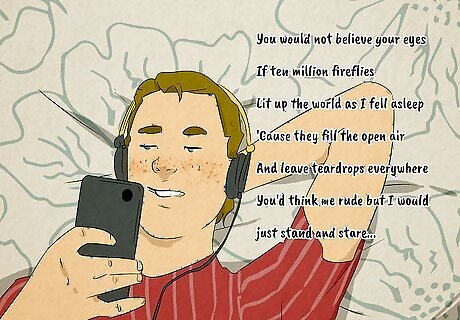
Listen to the lyrics and search for outside context about the track. When you’re listening to music, look up the lyrics on websites like Genius or AZ Lyrics and follow along. Read annotations by the artist (or other users) to understand complex lyrics, and pay close attention to the imagery, metaphors, wordplay, and rhyme scheme. It may also help to research the history and social climate of the time that the song was released. For example, "Tears in Heaven" by Eric Clapton is even more powerful when you learn it’s about his tragically deceased son. Kendrick Lamar's "The Blacker the Berry" is a searing personal letter written after Trayvon Martin was murdered. If you don’t know the political and social ramifications of that case, then the song might not resonate with you.
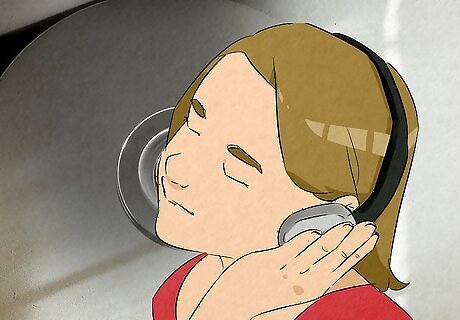
Build up your musical concentration for longer pieces. When listening to a lengthy piece of music, it’s completely normal to lose focus. Composers are well aware of this, so they try to include musical “benchmarks” throughout the song. Challenge yourself to focus on each section on repeat listens, and replay any parts that you zone out on—you might be surprised at the subtle nuances you pick up the second time around! Try out Duke Ellington's "Diminuendo in Blue," to get started. It is long, but high-energy and exciting throughout, with well repeated themes and melodies.

Look for high-quality audio options outside of streaming. While streaming music is convenient, most services compress the size of their audio files, which can reduce the dynamic range and overall quality. Vinyl records and CDs provide a richer sound than most streaming platforms, but some platforms offer premium options that contain higher-quality audio. Tidal, Amazon Music, and Apple Music are popular platforms that offer high-resolution streaming. Alternatively, purchase a DAC (digital-to-analog converter) to convert digital files into an analogue audio signal. It significantly improves the music quality from your phone, laptop, or computer.

Use high-quality headphones to listen to music. Headphones allow you to hear all the details in a song, creating a more personal and immersive listening experience. They tend to be more affordable than speakers, and many companies offer noise-cancellation options that can block out any distracting background noise in your environment. Popular high-quality headphones include the Sony WH-1000XM5 or the Bose Noise Canceling Headphones 700.

Move around to enhance the listening experience. Studies show that listening to music stimulates the brain’s reward centers, while dancing activates its sensory and motor circuits. In other words, listening while moving can create an even more immersive and pleasurable experience. Focus on the instruments and melodies within the song, and feel free to dance along to the beat. Alternatively, listen to music while driving along a scenic route. The visual stimulation may help increase the colors and textures in the song.
How to Find New Music

Ask friends and family members for music recommendations. If you're not much of a music person, the huge variety of genres and styles can be overwhelming, to say the least. Instead of diving in randomly, ask a loved one to help broaden your horizons. Everyone has different musical tastes, but the people who know you best are more likely to share music you’ll appreciate. Tell your loved ones about your favorite songs, genres, and artists so they can help you find good music based on what you like.
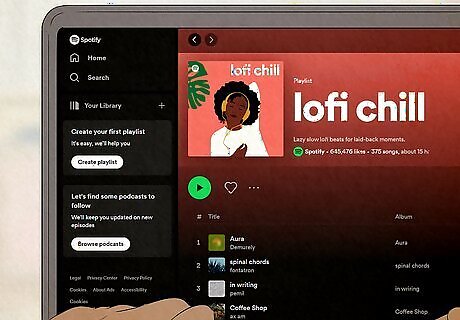
Get personalized music recommendations on streaming services. Platforms like Spotify, Apple Music, YouTube Music, Pandora, and SoundCloud curate custom playlists based on your mood and listening history. Just make a free account, and start streaming your favorite songs so the algorithm can analyze the data and suggest new music that you’ll enjoy. Alternatively, head to your local library and ask someone to help you pick out a few CDs.
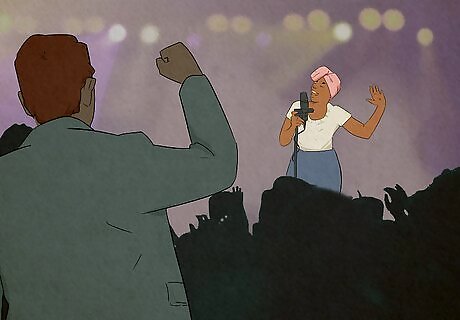
See bands perform live, and give the opening acts a chance. Attending a concert is one of the best ways to expand your musical library because you can feel the music in real time and discover smaller artists. Just make sure to check the time of the show on your ticket confirmation email, and give yourself enough time to head to the venue. Generally, the opening acts play about 30 minutes to an hour after the “doors open.”
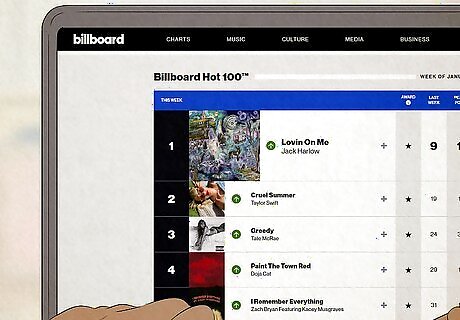
Follow music charts to discover new songs and artists. If you want to discover the most popular songs in the United States, check out the Billboard Hot 100 chart each week to see what’s trending. It tracks all genres and is ranked by physical and digital sales, online streaming, and radio play.
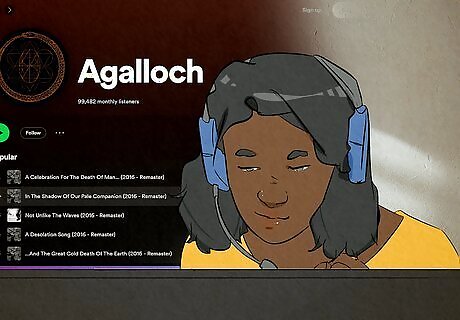
Challenge yourself to listen to new genres. If you want to have diverse taste in music, start listening to a genre that falls right outside your favorite genre or blends 2 or more genres together. Then, experiment with listening to music that is completely out of your comfort zone. For example, if you’re into classic rock, you could try listening to punk rock or heavy metal, before moving onto country or classical music. All genres of music borrow from others. From the oldies-sampling hip-hop beats to the reggae/punk lovechild known as "ska," you'd be surprised how often influences from dissimilar genres bleed over!
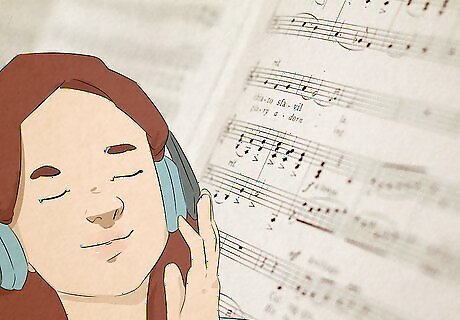
Stay true to your personal preferences and habits. If you like a song or band that other people aren’t into, don’t feel bad or “guilty” about it. Music is subjective, at the end of the day, and an easy way to discover new music is to find similarities in music that you love listening to.




















Comments
0 comment